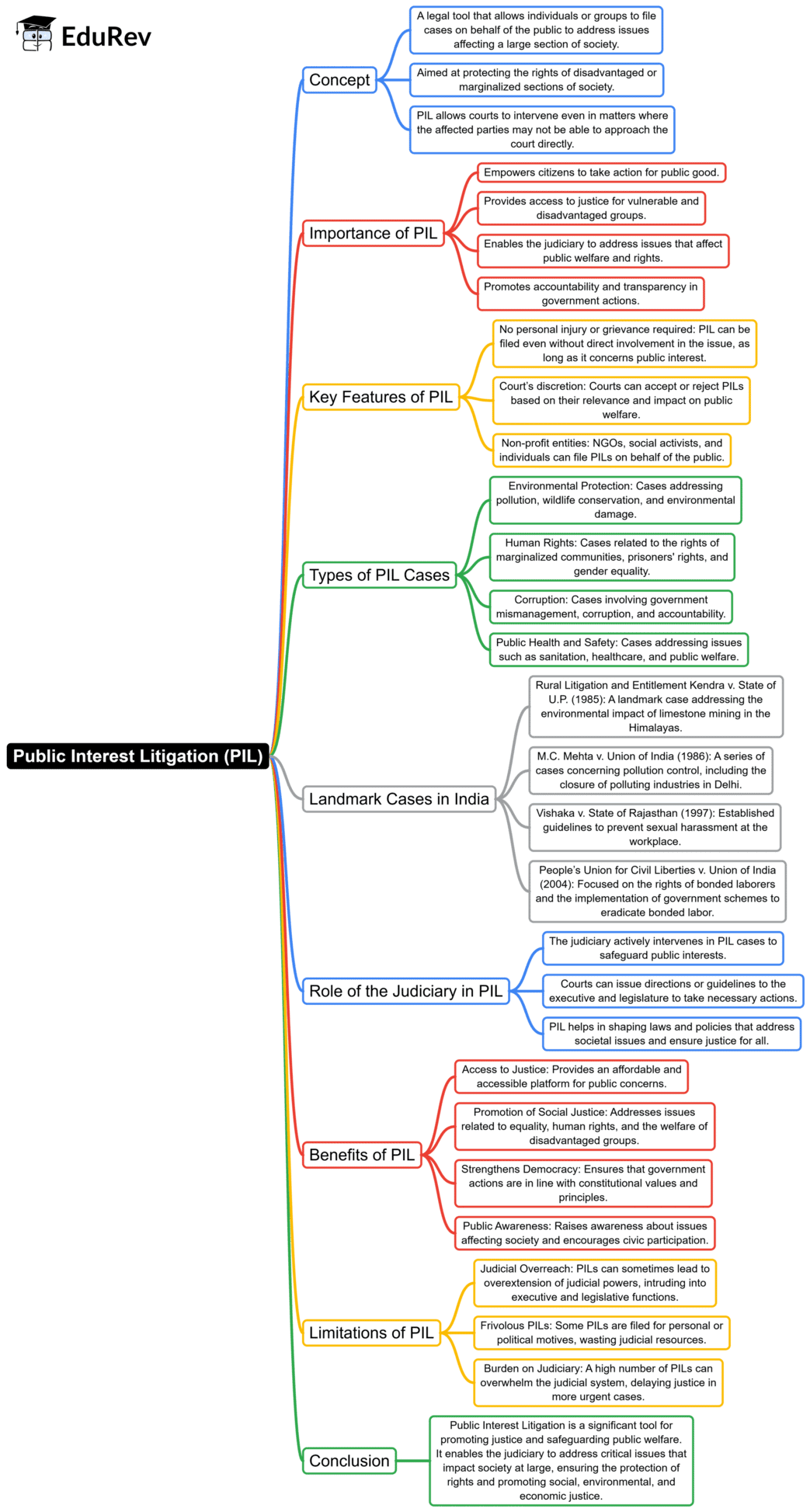UPSC Exam > UPSC Notes > Indian Polity for UPSC CSE > Mind Map: Public Interest Litigation
Mind Map: Public Interest Litigation | Indian Polity for UPSC CSE PDF Download

The document Mind Map: Public Interest Litigation | Indian Polity for UPSC CSE is a part of the UPSC Course Indian Polity for UPSC CSE.
All you need of UPSC at this link: UPSC
|
162 videos|999 docs|260 tests
|
FAQs on Mind Map: Public Interest Litigation - Indian Polity for UPSC CSE
| 1. What is Public Interest Litigation (PIL) and how does it function in the judicial system? |  |
Ans. Public Interest Litigation (PIL) is a legal mechanism that allows individuals or groups to file petitions in court for the protection of public interest. It provides a platform for those who may not have the resources to pursue legal action on their own. PIL can address issues such as environmental protection, human rights, and social justice. It functions by enabling the judiciary to take cognizance of matters that may affect the public at large, allowing courts to act even in the absence of direct injury to the petitioner.
| 2. Who can file a Public Interest Litigation? |  |
Ans. Any individual or organization can file a Public Interest Litigation as long as the case addresses a significant issue affecting the public or a community. This includes NGOs, social activists, or even concerned citizens. The court typically encourages PILs to ensure that justice is accessible to all, especially for marginalized sections of society who may not have the means to approach the court.
| 3. What are the key principles guiding the acceptance of PILs in court? |  |
Ans. The key principles guiding the acceptance of Public Interest Litigation include the requirement that the case must involve a matter of public interest, the absence of personal gain for the petitioner, and the need for the issue to be justiciable. Courts often assess whether the case has broader implications for society and if the petitioner has a genuine concern for public welfare, rather than personal grievances.
| 4. What are some landmark cases related to Public Interest Litigation in India? |  |
Ans. Several landmark cases have shaped the landscape of Public Interest Litigation in India. Notable examples include the Vishaka vs. State of Rajasthan case, which established guidelines for preventing sexual harassment in the workplace, and the M.C. Mehta cases, which focused on environmental protection, including the Ganga river pollution issue. These cases highlight the judiciary's role in addressing critical social issues through PILs.
| 5. What are the challenges associated with Public Interest Litigation? |  |
Ans. While Public Interest Litigation plays a crucial role in promoting justice, it faces several challenges. These include misuse by individuals for personal gains, delays in the judicial process, and the burden of petitions that may not genuinely serve public interest. Additionally, there can be issues related to the quality of legal representation, leading to ineffective advocacy for significant issues. Courts are increasingly vigilant in filtering out frivolous petitions to maintain the integrity of PILs.
Related Searches
















